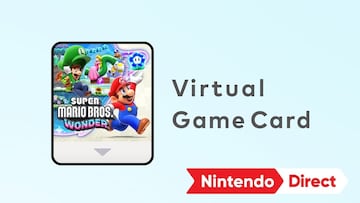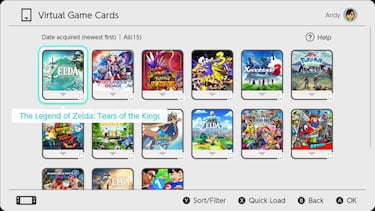Game sharing redefined: How Nintendo’s Virtual Game Cards compare to Steam, Xbox, and PlayStation
Keeping the cartridge spirit alive in the digital era.

It seems that Nintendo is unwilling to let go of cartridges, which have been a signature feature of their systems for years. As the gaming world shifts toward digital-only versions of games, the Japanese company has announced their latest innovation: Virtual Game Cards. This approach appears to target families who may own more than one Nintendo Switch, now that the Switch 2 is just around the corner. It also offers greater flexibility for players with their digitally owned games.
There has long been a debate about how digital ownership limits players’ ability to share their favorite games with friends. Decades ago, lending a cartridge back and forth allowed friends and family to share the fun. Nintendo’s Virtual Game Cards aim to revive that experience in a modern context, without the risk of never getting your game back, fortunately.
Now, digital games in Nintendo users’ accounts will function as virtual cartridges. These can be lent to another system for up to two weeks and can also be traded back and forth between two systems owned by the same player, or even among up to eight systems within a Nintendo Switch Online family group, also for a short period.

What Others Have Done to Enable Game Sharing
The most beloved sharing system to date is likely Steam’s Family Sharing. It allows up to 5 accounts across 10 devices to share libraries while earning individual achievements and maintaining separate save files. However, as of 2025, Steam implemented a requirement for all accounts to belong to the same household, making it impossible to share with friends outside the home.
On the other hand, Xbox and PlayStation offer a system based on setting up a primary console. This allows users to log in on another device to play games, which can be done simultaneously. Additionally, Xbox Game Pass enables players to download and play games from its catalog, as long as that Xbox is online, and logged into the membership owner’s account.
Here are the differences between all the main options:
Nintendo Virtual Game Card System
- Facilitates sharing digital games across Nintendo Switch consoles.
- Work like physical game cards, allowing lending to up to 8 family members.
- Lending period limited to 2 weeks.
- Can lend to any Switch Console, one game at a time
- Requires internet connection for setup and sharing.
Steam Family Sharing
- Shares Steam libraries with up to 5 accounts across 10 devices.
- Achievements and game progress remain independent for each user.
- Cannot play the same game simultaneously.
- Enforces household-only sharing.
PlayStation 5
- Allows sharing of purchased games and PlayStation Plus benefits with one other console.
- Requires enabling “Console Sharing and Offline Play” on the primary PS5.
- Both consoles can play shared games simultaneously.
Xbox Series X|S
- Enables sharing of digital games and Game Pass subscriptions between two consoles.
- Requires setting the other console as your “Home Xbox.”
- Both consoles can access shared content and play simultaneously.
Related stories
Follow MeriStation USA on X (formerly known as Twitter). Your video game and entertainment website for all the news, updates, and breaking news from the world of video games, movies, series, manga, and anime. Previews, reviews, interviews, trailers, gameplay, podcasts and more! Follow us now!


Complete your personal details to comment